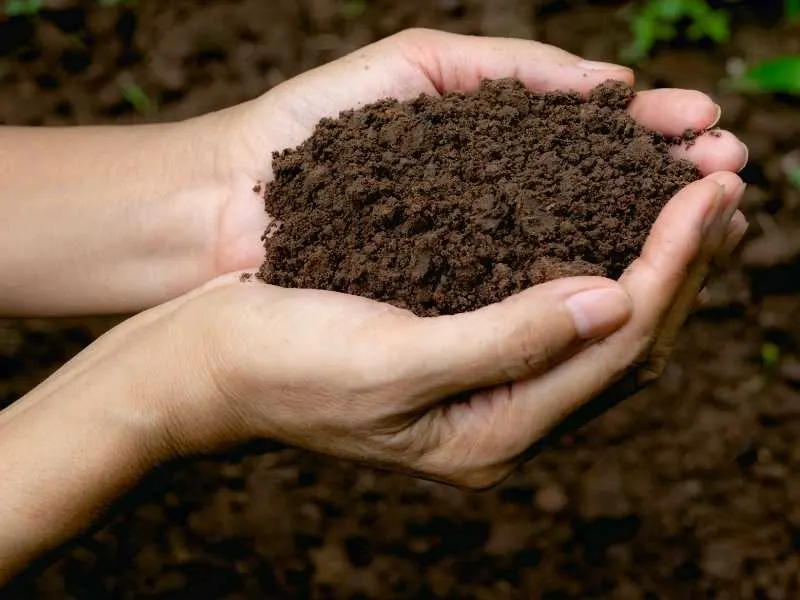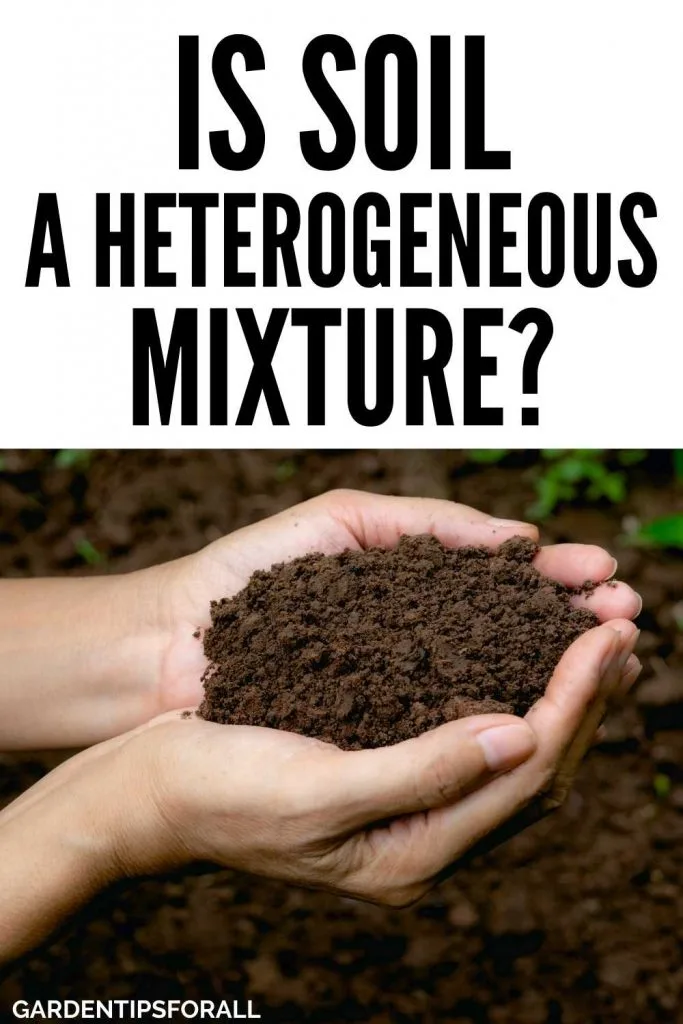Which Type of Mixture is Soil – a Heterogeneous or Homogeneous?
Soil is crucial to the earth’s ecosystem. Every living organism, either directly or indirectly, depends on soil for existence. And we all know that you need soil for gardening. But you may be wondering, is soil a heterogeneous mixture or homogeneous?
Soil is a heterogeneous mixture since it’s made of different components with different characteristics.

Join me as I discuss what makes soil a heterogeneous mixture, why it’s not homogenous, and a few other facts about soil. The good thing is, extensive research on soil exists, and we’ll just be looking at already proven scientific truths.
Related: Can You Use Garden Soil in Pots?
What is Soil?
Soil is a fine material formed from weathered rocks. It develops mainly when forces of nature such as wind, water, and heat act on rocks, breaking them down into finer particles.
The weathering process can take as long as thousands of years to refine the particles to form soil as we know it.
In addition, soil also contains other materials like mineral particles, air, water, living organisms, and organic matter. Also, though soil covers almost every part of the earth’s surface, the depth and material compositions vary from place to place.
Mixture vs. Compound
Matter is defined as anything that has mass and occupies space. It has distinct chemical and physical properties and can be in the form of a solid, gas, or liquid.
Furthermore, matter can exist as pure substances or in combinations. Today, scientists have identified 118 pure substances and tens of millions of combinations.
Technically, a mixture and a compound are both combinations of pure substances. But there are differences in how the substances combine, the resulting properties, and ways of separating them.
Also, substances forming a mixture could be in any quantities and proportions, but the amounts and ratios are fixed in compounds.
For mixtures, the substances combine physically, retain their individual properties, and are separable using physical methods like filtration and distillation. An excellent example of a mixture is air, which is a combination of several gases like oxygen and nitrogen.
In contrast, a compound has several pure substances that combine chemically, each lose its individual properties, and are only separable by chemical methods like electrolysis. A good example of a compound is water, which is a combination of oxygen and hydrogen.
Is Soil a Mixture Or Compound?
Yeah, you guessed right. Soil is a mixture. And apart from having mixture properties, soil exists in more than a hundred types, each varying in material combinations.
Also, the materials greatly vary in mass and volume in the varieties. Now you understand why soil is said to be a mixture and not a compound.
Why is Soil a Heterogeneous Mixture?
We have seen that soil is a mixture. But which type of mixture? For starters, there are two types of mixtures: homogenous, also called solutions, and heterogeneous mixtures.
The main difference being homogeneous mixtures have uniform composition and properties, while they vary in heterogeneous mixtures. For instance, mixing salt and water forms a homogenous salty water mixture, while salad is a heterogeneous mixture of different vegetables.
As we earlier mentioned, soil forms from weathering rocks, and hence the particles will vary in size, shape, and proportions and change as weathering progresses. Also, organic matter, water, air, and minerals vary in quantity and ratios, even in soil within the same location. Hence, soil is a heterogeneous mixture.
Other soil facts that show its heterogeneity are:
- There are more than 100 soil types globally.
- Each soil type varies in particle sizes, color, composition, and texture.
- The material composition, sizes, concentration, and other individual properties can vary within different places of the same soil sample.
Why Soil is Not a Homogenous Mixture
By definition, a homogenous mixture has physical attribute uniformity for the constituent substances.
This simply means that every particle has to be of the same size and uniformly distributed within the mix. For instance, in our previous example of saltwater, the dissolved salt distributes evenly, and there is no physical difference between different parts of the mixture.
And, clearly, soil does not fit the characteristics of homogeneous mixtures. The constituent particles vary in size and shape, the concentrations aren’t uniform, and you can clearly see differences in various parts of the same soil sample. So, soil is not a homogenous mixture.
Conclusion
There is no doubt that soil is a heterogeneous mixture. The constituent particles of sand, water, minerals, air, and organic matter exist in different sizes, colors, textures, and compositions in almost every soil sample you’ll collect. Besides, soil types are numerous globally, each with varying physical properties. Now you know the nature of the soil. And as always, happy gardening.
Related Articles:
- Does Potting Soil Go Bad?
- Can I Use Builders’ Sand for Gardening?
- 11 Vegetables You Can Grow in Clay Soil
- How to Amend Clay Soil for Gardening
- 10 Vegetables You Can Grow in Sandy Soil

References
